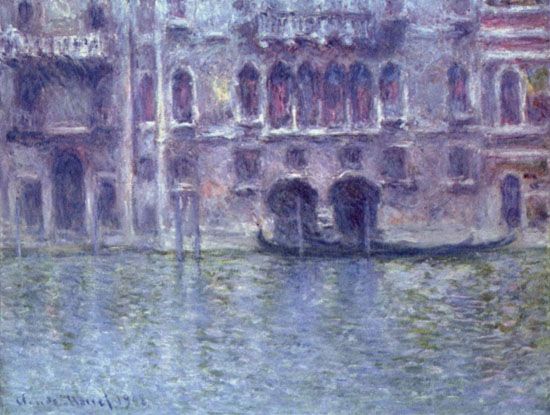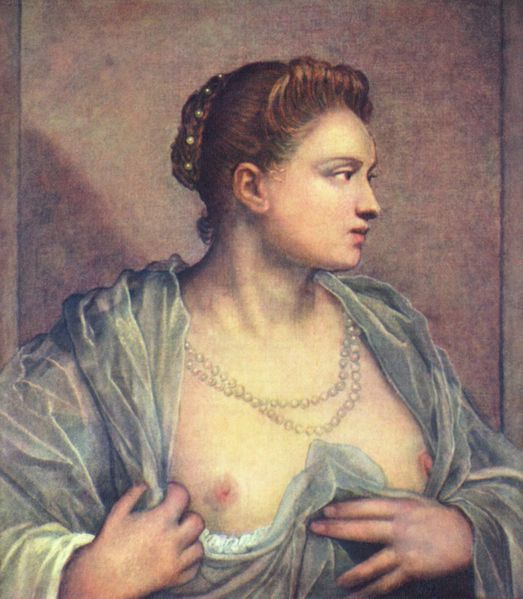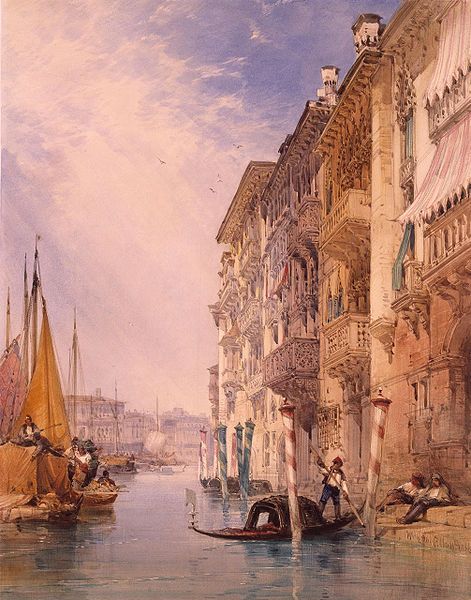Venice in art and literature

Venice is for me the city of Canaletto. For others, in literature and painting, Venice is a metaphor of death and the transience of life. Wagner died here in 1883 in the arms of his wife Cosima. Sergei Diaghilev, Ezra Pound and Igor Stravinsky are all buried on the Isola di San Michele. Thomas Mann's Death in Venice (Der Tod in Venedig, 1912) uses the Lido to great effect against the backdrop of a cholera epidemic and, in Henry James' The Wings of the Dove (1902), the killer is tuberculosis. Yet Venice was also the city of Marco Polo and Casanova, who had nine lives. Of course they didn't stay there either...
The Grand Canal - Venice (above) by J.M.W. Turner, was painted in 1835, the year after George Sand and Alfred de Musset had their fiery fling there. Known as "the painter of light," Turner brilliantly captures Venice's watery spirit; its shimmering has a slight sense of menace, evoking the philosophical concept of The Sublime. It is there too in Claude Monet's funereal Le Palais da Mula (below), painted in 1908 on a rainy day in Venice. He would finish it several years later back in the studio, as his wife's health was failing.

Also see this Monet of Venice. But what is Venice without a racy image? The city was home to Pietro Aretino, creator of the most notorious book of erotica known as I Modi, and to Tintoretto, whose painting below, known only as Lady Baring her Breast (from around 1555 and now in the Prado), is more intimate and erotic than all his other Biblical and Classical nudes.

For other Venices, see Dante's Inferno and the Judecca, or this clock in the Piazza San Marco, and this and this Titian painting, or this and this Tiepolo painting. To finish, I rather like this painting by William Callow from 1866:

